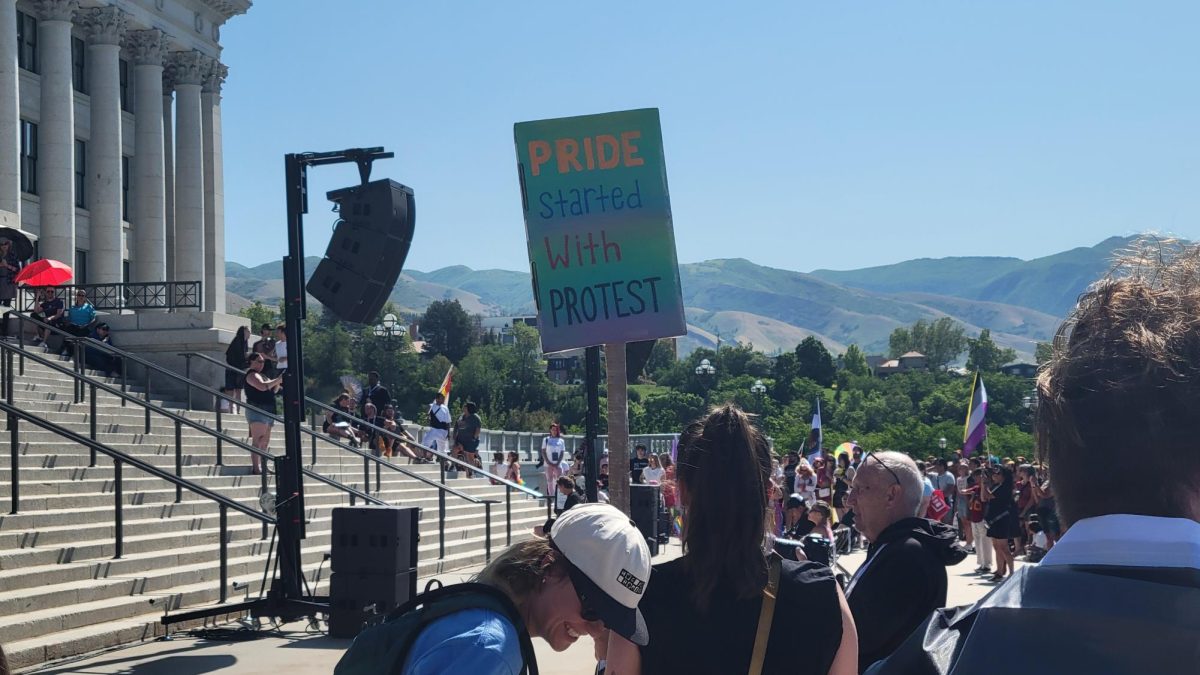In this country, each state has a reputation that may or may not be fair, but Utah is viewed as a seat of racism, and it’s up to the Beehive state to change that.

On Feb. 5, Emily Anderson of the Standard-Examiner reported that the Maria Montessori Academy in North Ogden would allow parents to opt their students out of Black History Month-based curriculum.
The news of this story quickly spread throughout the country as the common tone found on Twitter was disgust and frustration. It was also upsetting to local leaders. Betty Sawyer, head of the NAACP’s Ogden branch, reached out to the charter school hours before they changed gears and took away the option to opt-out.
In a statement released later that night, Sawyer said, “While this decision was recently reversed, we find its very consideration troubling.”
The decision came after organizations, corporations and people all over vowed to do better after the murder of George Floyd and the rallies that followed. Now, another organization was a source of pain and another way that would’ve allowed parents to shield their children from the history of the United States and its transgressions.
Before COVID-19, during a stroll inside the Shepherd Union Building at Weber State University, there would be a vibrant group of students. A majority of those students had complexions that vary through shades of brown and eyes that notice the constant stares from peers that don’t look like them.

According to records from the Office of Institutional Research, as of fall 2020, only 1.3% of students at WSU were Black. For comparison, 74.4% were white, 11% Hispanic and 1.7% Asian.
Carter Smith, a former resident assistant at Stewart Wasatch Hall, originally from Georgia, said he often advises Black students like himself to not stick around Utah longer than they have to.
“I had many great experiences there, but as someone who’s worked as a server at Buffalo Wild Wings, I picked up that a lot of people out there just aren’t used to us, which could be dangerous if there’s some conflict,” Smith said. “There’s always lots of stares … that isn’t always a bad thing, but for me, it’s a quick way to make me uncomfortable. I lived in Ogden and was ready to leave, and that’s saying something, because Ogden isn’t nearly as bad as other places like Provo.”
Provo is home to Brigham Young University. According to collegefactual.com, a source that compiles data and gives their best estimate of the demographics at universities, BYU is made up of only 0.5% of Black students, with 81.4% of students being white.
Of the four better-known schools in the state (WSU, BYU, Utah State University and the University of Utah), BYU has the lowest tally of Black students, according to collegefactual.com. USU is listed at 0.9%, while the U of U lists with 1.4%.
This means that, of the more prominent schools in the state, the site lists WSU as a school with one of the highest populations of Black students. But having a a higher population of diverse students does not make it an inclusive environment.

Perhaps people would argue it’s not inclusive because of the tweets that were sent out by former professor Scott Senjo in which he implied that he’d bring harm to those who were protesting against police brutality. These tweets resulted in Senjo resigning, rescinding his resignation and resigning again.
A student could point out the time when material promoting white supremacy was found throughout the Ogden campus on March 30-31, 2019, and it took until April 10, 2019, for WSU President Brad Mortensen to release a statement about the issue. From that point on, minimal updates came out about it.
However, there is sometimes growth where there once was fault.
During an online town hall meeting, Black students at WSU were given a platform to criticize the university over racism. Issues were cited by Terri Hughes, Shawnica Sanders and Nailah Mansa about a lack of progression, the dangers of Senjo’s potential teachings and how having conversations is no longer enough.
Mortensen was also a speaker at the online meeting, and in a story reported by the Standard-Examiner said, “I feel like I understand, but I haven’t taken that step to be helping as proactively as I should have … I’ve had a bit of realization where my own actions haven’t met up with my understanding.”
Seven days before the online meeting and six days after the story about Senjo’s tweets broke, the university once again found itself dealing with controversy; this time sparked by a student athlete.

ABC4 News broke a story that had begun to catch fire through the WSU community. A Wildcat soccer player had recorded a video of himself using racial slurs and sent it to a non-WSU student. The incident happened back in the summer of 2020, but after the Black Lives Matter protests started to gain momentum throughout the country, the victim felt it was no longer acceptable to condone racism.
In the video, the former Wildcat is responding to the victim’s decision to go home rather than help with door-to-door sales by saying, “Hopefully you’re in the cotton fields where you belong, you worthless n*****.”
In an interview with ABC4, the victim claimed that his initial complaints to WSU were met with a deterring response.
“They told me that since I am not affiliated with Weber State University, or currently attend as a student, that they would not be able to look into my complaint,” he said.
This led the news outlet to follow up with the university about the claims.

They were told by the school that “Weber State responded immediately. This is an ongoing matter that is currently under review.”
WSU is working on becoming a more inclusive environment, but like the rest of the state of Utah, there is still work to be done until that journey is complete.
Kayla Watkins, a Black student who spent this past basketball season nursing an injury, has elected to transfer to a different university and is excited to finally be out of Utah.
“When I officially entered the transfer portal and drove home, I couldn’t have been happier,” Watkins said. “Being back home has felt like someone has come and lifted a weight off my shoulders. Utah was a shock that I never got used to. Honestly, the drive home might have been one of the best road trips of my life.”
What has held Utah back for decades is a barrier of racial unfamiliarity, and that can be hard to topple. If Utahns ever want the reputation of their state to change, then they must begin to climb over the barrier and reach the other side to understand the outside perspective and have the opportunity to bring gradual change.



















